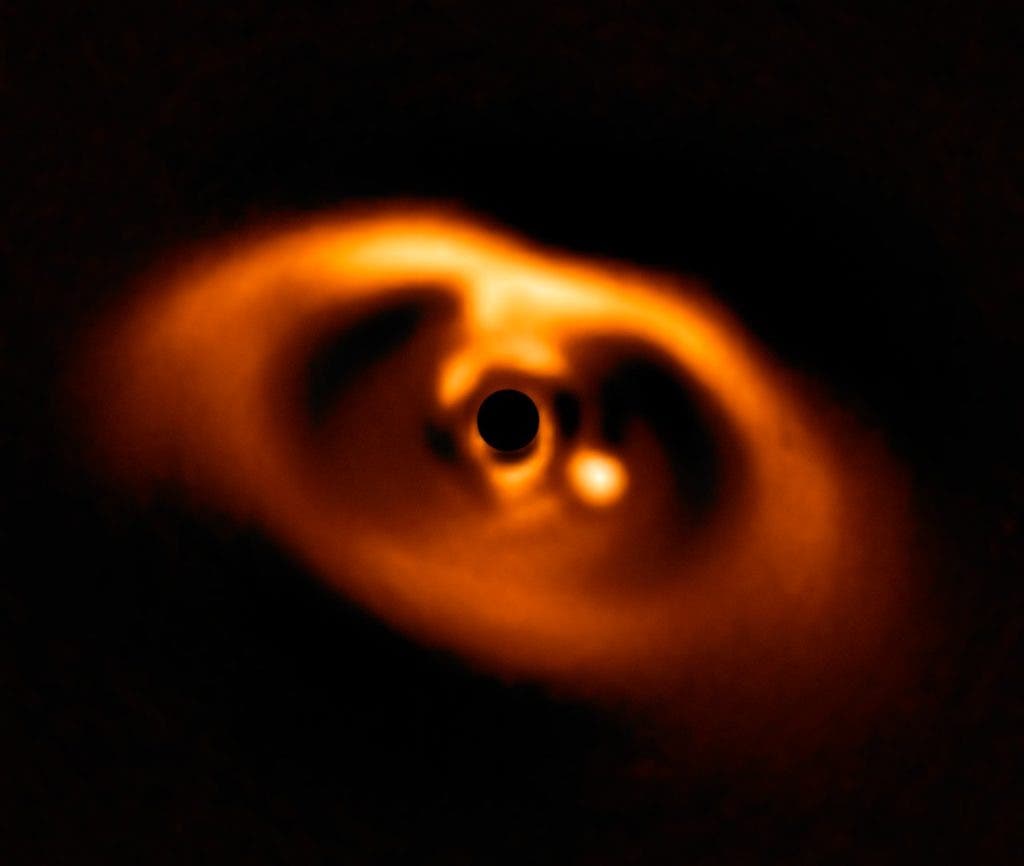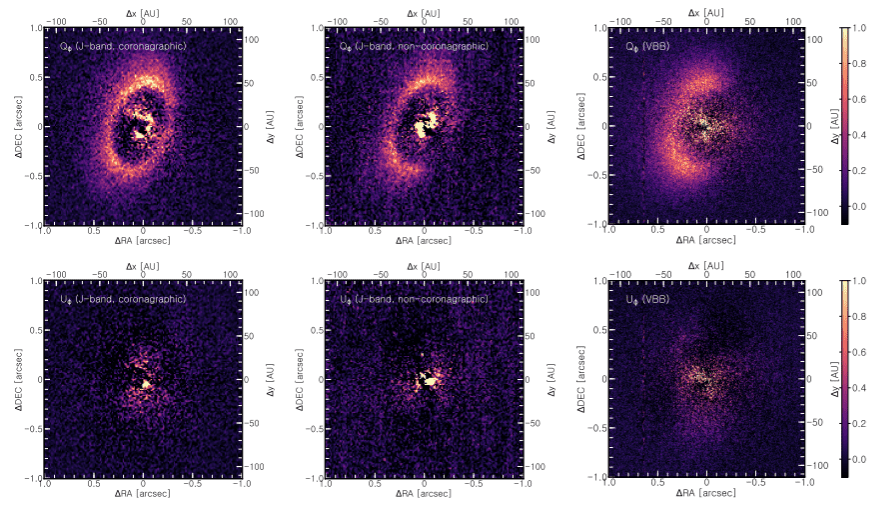Astronomers have snapped the first pictures of a planet forming.

Image credits ESO / Müller et al., 2018, A&A.
Researchers led by a group at the Max Plank Institute for Astronomy in Heidelberg, Germany, are spying on a baby planet. The object of their attention is a still-forming planet that orbits around PDS 70, a young dwarf star. This is the first time we’ve captured clear images of a forming planet and its travels through the dust cloud surrounding young stars.
Far-away spheres
The images were captured using the SPHERE instrument installed on Unit Telescope 3 of the European Southern Observatory (ESO’s) Very Large Telescope (VTL) array in Chile. SPHERE, the Spectro-Polarimetric High-contrast Exoplanet REsearch instrument, is one of the most powerful planet-finding tools astronomers have at their disposal today. What makes SPHERE stand out in the field of exoplanet exploration is that, unlike the majority of its contenders, it relies on direct imaging — SPHERE takes actual photographs of planets millions or billions of kilometers away.
SPHERE relies on a technique known as high-contrast imaging to produce such amazing shots. The device uses complex observation techniques and powerful data processing algorithms to tease out the faint traces of light incoming from planets around bright stars. Astronomers draw on the Earth’s rotation to help them better observe such planets — SPHERE continuously takes images of the star over a period of several hours, while keeping the instrument as stable as possible. This creates images of a certain planet taken from slightly different angles and at different points in the stellar halo, giving the impression that it’s slowly rotating or moving about. The stellar halo, meanwhile, appears immobile. The last step is to combine all the images and filter out all the parts that do not appear to move — blocking out signals that don’t originate from the planet itself.
The new planet, christened PDS 70b, stands out very clearly in the images SPHERE recorded. It appears as a bright point to the right of that blackened blob in the middle of the image. That blob is a coronagraph — a mask that researchers apply directly onto the star, lest its light blocks out everything else in the image.

Image credits Müller et al., 2018, A&A.
PDS 70b is a gas giant with a mass several times that of Jupiter. It’s about as far from its host star as Uranus is to the Sun. Currently, PDS 70d is busy carving a path through the planet-forming material surrounding the young star, the researchers note, making it instantly stand out.
“These discs around young stars are the birthplaces of planets, but so far only a handful of observations have detected hints of baby planets in them,” explains Miriam Keppler, who lead the team behind the discovery of PDS 70’s still-forming planet. “The problem is that until now, most of these planet candidates could just have been features in the disc.”
PDS 70d is already drawing a lot of attention from astronomers. A second paper, which Keppler also co-authored, has followed-up on the initial observations with a few months of study. The data from SPHERE also allowed the team to measure the planet’s brightness over different wavelengths — based on which they estimated the properties of its atmosphere. The planet is blanketed in thick clouds, the team explained, and its surface is currently revolving around a crisp 1000°C (1832°F), which is much hotter than any planet in the Solar System.
The findings also helped researchers make heads and tails of a structure known as a transition disc. This is a ring-like protoplanetary (meaning it is involved in early planetary formation) structure. Transitional disks roughly resemble a stadium, with a clean area in the middle (from which planets drew their matter), surrounded by a ring of dust and gas. While these gaps have been known for several decades now and speculated to be produced by the interaction between forming planets and its host star’s disk, this is the first time we’ve actually seen them.
“These objects represent […] disks whose inner regions are relatively devoid of distributed matter, although the outer regions still contain substantial amounts of dust,” explains a paper published by Strom et al. in 1989.
All this data helps flesh out our understanding of the early stages of planetary evolution — which are quite complex and, up to now, “poorly-understood”, according to André Müller, leader of the second team to investigate the young planet.
“We needed to observe a planet in a young star’s disc to really understand the processes behind planet formation,” he explains.
The findings further help improve our overall knowledge of how planets form. By determining PDS 70d’s atmospheric and physical properties, astronomers now have a reliable data point from which to extrapolate — which will help improve the accuracy of our planetary formation models.
Not bad for a bunch of photographs.
The first paper, “Discovery of a planetary-mass companion within the gap of the transition disk around PDS 70” has been published in the journal Astronomy & Astrophysics.
The second paper, “Orbital and atmospheric characterization of the planet within the gap of the PDS 70 transition disk,” has also been published in the journal Astronomy & Astrophysics


